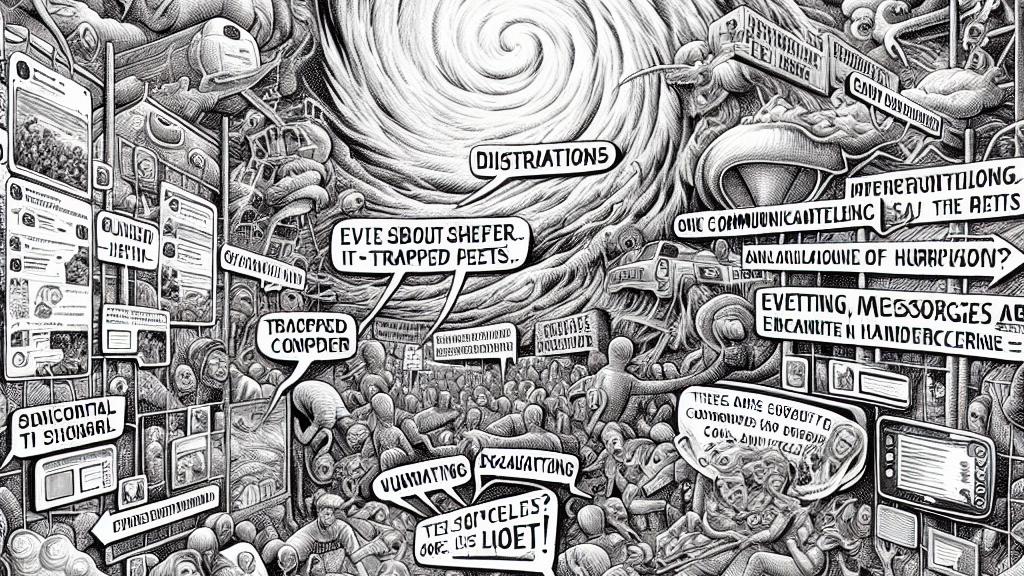The Challenge of Communicating Safety During Hurricanes
Overview
- Hurricanes create overwhelming social media noise that can drown out crucial safety messages.
- Users often engage in trivial chatter, leaving essential emergency information overlooked.
- Implementing strategic communication measures can significantly enhance public awareness and response during disasters.

The Problem with Online Chatter
In the United States, the chaos brought on by hurricanes isn’t just a matter of physical destruction; it manifests a fundamental challenge in communication. During powerful storms like Hurricane Harvey and Hurricane Florence, platforms such as X (formerly Twitter) flood with chatter that frequently distracts from critical safety information. For instance, while many users were animatedly sharing heartwarming stories about pets trapped in floods, only a mere handful of tweets addressed how to seek shelter or evacuate safely. It’s like trying to hear a whisper amidst a loud and boisterous crowd—essential messages get lost. This overwhelming noise can lead not only to confusion but also to dire consequences for those unaware of the urgent actions they should take in perilous times.
The Need for Effective Messaging
To effectively combat the clutter of online conversations, safety messages must break through the constant stream of chatter. Research reveals that vibrant, descriptive updates about evolving storm conditions captivate audiences more than straightforward alerts. For example, instead of saying, 'Evacuate now,' a message stating, 'Catastrophic flooding is imminent; find your nearest shelter—lives are at stake!' conveys urgency, importance, and a call-to-action all at once. This method not only shocks individuals into responding but also paints a clear picture of the urgency involved. However, many social media users often drift toward less critical discussions, which diminishes the attention vital information deserves. Thus, crafting messages that are engaging and actionable is paramount to fostering a sense of urgency and ensuring that people take necessary precautions.
Potential Solutions and Future Directions
Looking forward, it is essential to devise innovative strategies to enhance the impact of disaster communications. Social media platforms could prioritize official safety messages for users in affected areas while creating a balance that allows casual interactions among those less impacted. Imagine a scenario where scrolling through your feed reveals not only urgent safety notifications but also compelling imagery and videos that captivate your attention. Moreover, conducting public education initiatives that emphasize the risks of misinformation and promote critical thinking regarding social media content can help foster a more informed public. In a rapidly evolving digital landscape, collaboration between emergency management professionals and social media companies is absolutely essential. Together, they can ensure that essential safety information rises above the noise, fostering a swift and comprehensive community response when disaster strikes.

Loading...